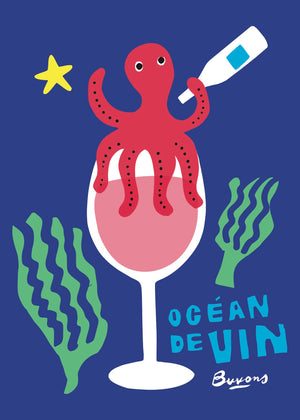
Grapes: Lambrusco Maestri
Region: Emilia Romagna
Vintage: 2020
Viticulture: Organic + Biodynamic
Soils: Silice
Vinification: Macerated, then transfered to bottle before fermentation is complete
Aging: In bottle
Fining or Filtering: None
Sulfur: None
Notes : Stefano Pescarmona after graduation, in the mid-90s, began a consulting and teaching path in the field of sustainable agriculture, he joined Slow Food dedicating himself, among other things, to educational gardens at the University of Gastronomic Sciences of Pollenzo.
After about 20 years of experience as a consultant he decides to create his own company and, in 2013, he founded Podere Magia: 3 hectares of vineyards and 15,000 bottles produced per year. The native vines raised by the farm are those of the Emilian tradition: Lambrusco Maestri, Spergola, Trebbiano Romagnolo and Malvasia Aromatica di Candia. Few labels are produced, the wines are all refermented in the bottle.
It is a Lambrusco Maestri refermented in the bottle with the so-called Ancestral method, that is, it is bottled with still some residual sugar so that the fermentation is completed in the bottle, giving the wine the typical sparklingness of Lambrusco.
Tasting impressions :
Dense color with purple reflections, purplish mousse.
On the nose we find cherry, raspberry, wild strawberry, a vinous and undergrowth note, wet grass, spice, balsamic, eucalyptus and juniper.
In the mouth it has a good structure for a Lambrusco, the sparklingness is delicate. If tasted fresh, without combining it with any food, the acidity and a slight astringency are more noticeable. On the contrary, if it is combined with a slice of salami (typical combination of the territory) everything returns to balance: the hardness is dampened by the fatness of the salami and, on the finish, a sweet note peeps out.
The overall judgment is extremely positive with an unexpected complexity for a Lambrusco, to appreciate it at its best it is advisable to combine it with fatty foods, such as cured meats.
Arriving at how to taste this wine, I started from the concept of conviviality as a representative emblem rooted in Lambrusco. Combined with the extremely original and refined production method. Of a bottle that does not want to emerge for its appearance but for its content. The result is a totem made from a local log. At its top we find a recess in which to place the bottle; and just below a groove in which the various wooden cutting boards are positioned. Each taster can take out a cutting board, fill his glass and taste cold cuts-cheeses-wine in the company of his friends or simple Lambrusco enthusiasts.




